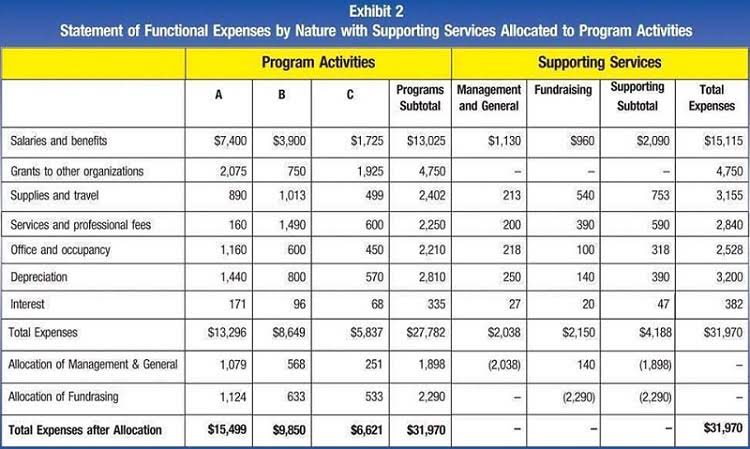
For example, a consulting company is working on a big client project but won’t get paid in full until the end of the project. We’ll walk through each of them — category by category — to make it easy to understand. At first pass, this may look like a lot to digest, but remember, it’s just the same category of numbers repeated 12 times for each month. As the business grows we can get into more complex models, but for now, we’re just going to keep it super simple and get on with our lives. An Income Statement is just a spreadsheet where we add up all of our income in one area and all of our expenses in another.
Steps to make a pro forma income statement for a startup
It is a tool that internal management uses a lot to forecast future results and company performance. We will need the “net cash flow” from the cash flow statement to calculate the “cash & cash equivalents” on the balance sheet. Ultimately, it involves financial projections and assumptions that allow you to make calculated and logical business decisions. For decades, the proforma income statement has been a useful tool for startup founders, investors, and key decision-makers to examine the future financial health of the business. Pro forma financial statements provide a hypothetical look at how a company would perform based on a set of credible assumptions about one or more transactions it is contemplating. This enables businesses to evaluate the potential impact of new product launches, expansions, or other strategic decisions, making them essential tools for planning and decision-making.
Step 4: Finalize Projections
New financial models use computer programs that has made this testing better, which enables quick calculation for real-time decision making. While they all fall into the same categories—income statement, balance sheet, and cash flow statement—they differ based on the purpose of the financial forecast. This is one of the most common pro forma financial statements prepared by management. It assists management, investor and creditors in analyzing the impact certain economic conditions, business decisions, deals, merger or acquisitions and other events have on the profitability of a company.
Who uses pro forma?
- In the business lending world, lenders will look at a company’s pro forma balance sheet to determine the debt-to-equity ratio for additional lending.
- Management prepares projections for the next several years of the expected revenue increase and the rise in costs of operations.
- Make sure your revenue, expenses, and growth numbers make sense and are error-free.
- Your goal should be to observe and analyze the cost-benefit ratio of each situation and prepare accordingly based on your plan.
- The percent of a sales forecasting method, for example, involves determining future expected sales and finding trends across accounts in statements.
A company facing financial challenges decides to restructure its operations to improve efficiency. They use pro forma financial statements to analyze different restructuring scenarios, such as cost reduction initiatives, refinancing options, or divestitures. This assists them in evaluating the long-term viability and profitability of their restructuring plan. By leveraging pro forma projections, businesses can test hypothetical scenarios and make informed decisions, effectively planning and structuring their financial activities. Pro forma financial statements are used by business owners and companies for various strategic purposes. These include business planning and budgeting, funding and investment attraction, and mergers and acquisitions.

The preparation of pro forma statements in various economic environments is useful for management to examine the consequences of rises in expenses or economic downturns. With the best guesses of future results, managers proforma example can prepare budgets for all departments to deal with the expected conditions. Management prepares projections for the next several years of the expected revenue increase and the rise in costs of operations.
Pro forma balance sheet
Therefore our financial projections give us an insight as to how certain parts of the business (like our sales forecast) will start driving other aspects of the business (like our staffing plan). So, let’s think about forecasting as a worksheet that we will modify a million times until we get a solid understanding of which aspects of our income statements are working and which need to be more up-to-date. These come from sales, returns on investments, loans, and any other sources that inject cash into your business. Are there certain times of the year when you make the lion’s share of your sales? Also, consider the payment terms you’ve negotiated with clients – not all income might be as prompt as we’d wish.
- By understanding and utilizing pro forma financial statements, companies can make more informed decisions, develop strategies, and improve their overall financial planning and management.
- We’re going to take you through the steps necessary to create a basic full-year pro forma projection using an income statement, cash flow statement, and balance sheet.
- Shaun Conrad is a Certified Public Accountant and CPA exam expert with a passion for teaching.
- It differs when you begin forecasting various line items and calculating how those projections impact your bottom line.
- Use these models to test the goals of a company’s plan, provide findings that may be understood, and offer better, more accurate data than other methods.
- A company may present a pro forma statement to inform investors about their internal assessment of the financial outcome of a proposed change in the business.
- A pro forma invoice requires only enough information to allow customs officials to determine the duties needed from a general examination of the included goods.
Managers and individual contributors can also benefit from creating pro forma statements, enabling them to understand different factors impacting business units. Be advised that issuing pro forma financial statements to the public can be problematic, especially since the pro forma statements and the GAAP statements can vary so widely. Investors should be cautious when evaluating these types of statements because they present a considerably more favorable picture of the business.

Firm of the Future

It aids in assessing the potential financial stability of a business under different scenarios. By projecting the financial position at a specific point in time, companies can anticipate capital needs, evaluate solvency, and make strategic decisions regarding asset allocation and debt management. Traditional profit and loss statements are based on actual financial results, providing an accurate representation of a company’s past performance. Pro forma statements, on the other hand, are based on hypothetical scenarios, such as the impact of a specific business decision or a future event. In essence, pro forma statements are projections, while traditional statements are historical records.
- For example, in our sales forecast, we may find that initially, a single salesperson can handle everything but as we scale our business activities we need a massive sales team.
- So while pro formas are fantastic for looking at events from different angles, never take them as gospel, only well-informed conjecture.
- In this case, pro forma statements are like dipping your toe into the water before diving into the pool.
- If you’re just starting, look at industry benchmarks or conduct market research to make educated guesses.
- Just as a hiker uses a map to decide whether to cross a river at its narrowest point or take a bridge, you use your pro forma financial statement to navigate through business decisions.
- Harkening back to the previous section, a company can use a pro forma income statement, balance sheet, and cash-flow statement to project how these events might affect its financial position.

There are no universal rules that companies must follow when reporting pro forma earnings. This is why it is important for investors to distinguish between pro forma earnings and those reported using generally accepted accounting principles (GAAP). The statements are presented to the company’s management to help it make a decision on a proposed action based on its potential benefits and costs. For example, a company will report its actual sales and expenses for the quarter that just passed and, in the same chart, will list its projections of these numbers for the current quarter.


